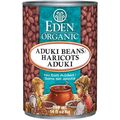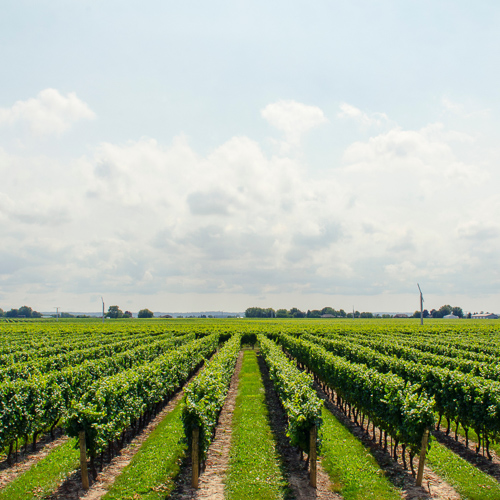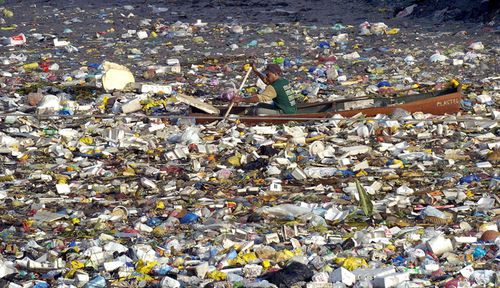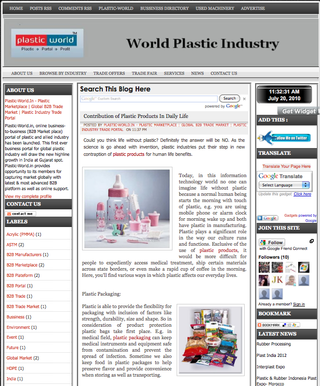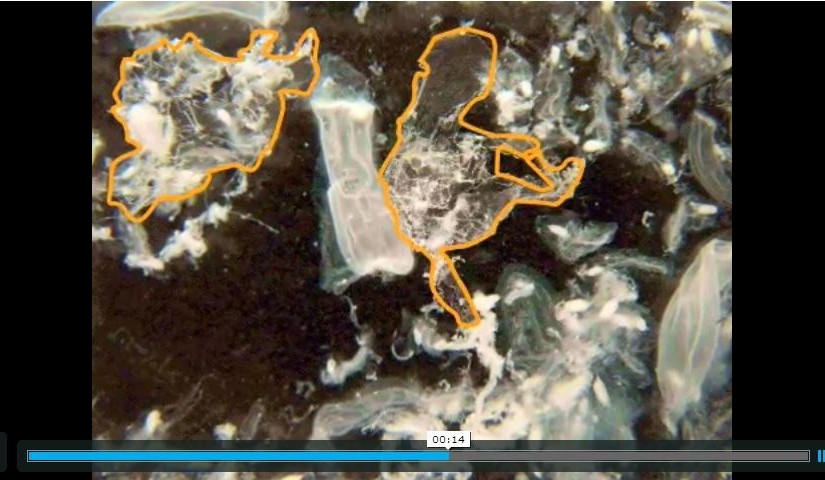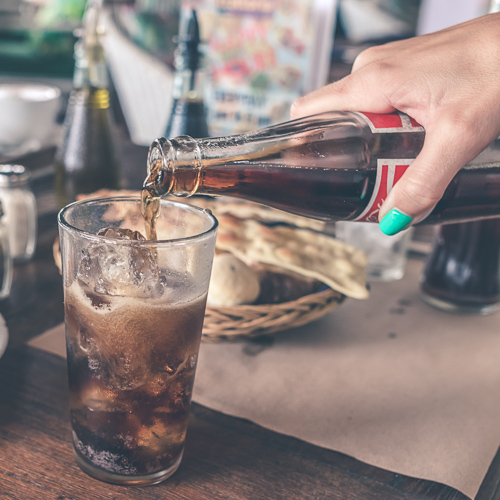10 April 2010 — Life Without Plastic is thrilled to be a sponsor for virtuoso eco-musician Frank Horvat‘s Green Keys Tourof solo piano performances across Canada. And what makes an ‘eco-musician’, you ask? According to Frank it means the musician is carrying on their professional activities in a sustainable way and minimizing their carbon footprint. Take a look at all the ways Frank is doing this on The Green(ing) Musician page of his website. The tour will raise funds for the Earth and promote Frank’s latest CD – A Little Dark Music – of original piano compositions, which explore “real world themes like the environment, poverty and Sept 11. Despite the somewhat sombre and serious subject matter, A Little Dark Music attempts to bring peace, joy and contentment to its listeners.
Canned Food You Can Trust – A list of BPA-Free Lining Canned Products
We continually hear about how bad bisphenol A (BPA) is for everybody and particularly for infants and pregnant women. The evidence is there. For those still skeptical, the precautionary principle dictates that you should be cautious. It is mind boggling that the food industry is so slow to remove BPA from the lining of food cans. Fortunately, some food companies understand the problem and have switched to non-BPA linings for their cans. They do not necessarily advertise this fact on their cans, so you need to memorize this list! Here they are:
1) Eden Food: They have been using BPA-free linings in their cans for more than 10 years! How visionary! Although the cans cost 14% more, the company feels it is worth it. I think so too. While Jay and I generally avoid buying canned food because of BPA, we are happy to indulge in a good vegetarian chili with non-BPA canned beans once in a while. Unfortunately, Eden’s tomatoes are still offered in BPA-lined cans because of the acidic nature of tomatoes… So try and find a brand of tomatoes packaged in a glass jar. This is especially important because acidic food increases the deterioration of the BPA lining and thus increases its leaching.
Become an Environmental Leader: Switch Wine Bottles from Glass to Plastic?
13 May 2010 — The website EnvironmentalLeader.com recently praised Marks & Spencer for switching all of its mini wine bottles from glass to “environmentally-friendly” polyethylene terephthalate (PET) plastic in the UK market. Since when has PET plastic become more environmentally-friendly than glass? From an energy consumption point of view, plastic production uses marginally less energy than glass (2,013 BTUs for PET versus 2,155 BTUs for glass) and perhaps this is where plastic may appear more environmentally-friendly. But if you look at the total life cycle of one single bottle, plastic and glass, you realize that glass is significantly superior:
- Glass containers can be cleaned and reused several times as part of consignment programs. We use milk from the company Harmony Organic (TM) which comes in a glass bottles that the company collects back, cleans and refills. PET bottles should not be reused as they deteriorate very quickly and can present increased health risks.
- Glass is highly recyclable, in fact it can be recycled eternally, because its structure does not deteriorate when reprocessed. Plastic bottles can only be recycled once. They can then simply be downcycled into an item that would not be used for food or drink such as fabric fibres for bags or clothes.
TOXIC AMERICA on CNN with Dr. Sanjay Gupta: The chemicals that surround us…
2 June 2010 — CNN is about to premiere a feature special called Toxic America focusing on the toxic chemicals that surround us in everyday life, whether we realize it or not. The show will be hosted by Dr. Sanjay Guptaover two nights (June 2 and 3, at 8pm EST and PST) and will in large part focus on the health and environmental effects of toxins found in plastics. Here’s a little video promo of the series.
As explained on the website of the Center for Health, Environment and Justice, Night #1 (Wednesday) will be an “hour-long investigative story into the environmental health and justice problems plaguing the community of Mossville, Louisiana. Nestled amidst an alarming cluster of chemical plants, Mossville is home to more PVC chemical plants than anywhere else in the entire country, and has been dubbed the Vinyl Manufacturing Capital of America.”
Night #2 (Thursday) will deal with the effects of “hidden toxins” in all of us, particularly expectant mothers and their babies. It will also feature a profile on Jeanne Heagle, who has been living plastic-free for over 2 and 1/2 years. This investigative series links well with the stunning book we have talked about often in the past: Slow Death by Rubber Duck.
Our Everyday Plastic Consumption is Like an Ongoing Giant BP Oil Leak
Think about it… all of the oil that is spewing out of BP’s open underwater well can be compared to all the plastic we throw out in the environment every single day… Go to a take out restaurant and take a look at the garbage cans. The amount of disposable plastic in there multiplied by millions corresponds to the amount of plastic that is discarded every day in the world. It is estimated that there are at least 200 billion pounds of plastic in the ocean. We look in horror at the gushing oil well, but we contribute to just as much pollution collectively every day by consuming and throwing out so much throw-away plastic.
An article by Daniella Russo, executive director of the Plastic Pollution Coalition entitled “The other, bigger ‘oil spill’: Your use of disposable plastic” made me reflect on the fact that we contribute every single day to the pollution of our environment through petroleum-derived objects we throw out.
21 June 2010 — Think about it… all of the oil that is spewing out of BP’s open underwater well can be compared to all the plastic we throw out in the environment every single day… Go to a take out restaurant and take a look at the garbage cans. The amount of disposable plastic in there multiplied by millions corresponds to the amount of plastic that is discarded every day in the world. It is estimated that there are at least 200 billion pounds of plastic in the ocean. We look in horror at the gushing oil well, but we contribute to just as much pollution collectively every day by consuming and throwing out so much throw-away plastic.
(Photo: seacat.wordpress.com)
An article by Daniella Russo, executive director of the Plastic Pollution Coalition entitled “The other, bigger ‘oil spill’: Your use of disposable plastic” made me reflect on the fact that we contribute every single day to the pollution of our environment through petroleum-derived objects we throw out.
“We are simply using too much disposable plastic for the small percentage that gets recycled to even make a dent. And, unlike paper, glass, or stainless steel, most plastic can only be “down-cycled,” or used for increasingly fewer purposes. All the recycling, like using a teaspoon to empty the ocean, simply can’t stem the tide of plastic engulfing us.” (…)
“The most powerful thing people can do to clean up the oceans is to refuse to use “disposable” plastics in the first place. Let’s add “Refuse” to the list of R’s: Refuse-Reduce-Reuse-Recycle. Until we reduce our use of plastics wherever possible, real change will not happen. Recycling or cleanup projects alone won’t cut it.”
It takes a lot of will power to plug that gushing well of disposable plastic production. Just as every small plastic-use gesture contributes to creating it, every small gesture can also help plug it.
Chantal Plamondon, Co-Owner
LifeWithoutPlastic.com
The Plastic Industry is Rejoicing Over Its Conquest of our Daily Lives
Check out this post on a website called “World Plastic Industry”. It describes how plastic has become indispensable in our daily lives… starting with your mobile phone and alarm clock, it goes through everything we use on a daily basis including packaging and building materials. It makes me feel so sad to realize that we have been won over with subtle but durable changes to our lifestyles that now seem irreversible. Irreversible because in some cases, we have completely lost the incentives to create non-plastic alternatives because the whole infrastructure has changed to accommodate plastic-based solutions. One good example comes from the packaging industry. Plastic is now being recognized as the only “hygienic” way of packaging take-out food. When I approached a local restaurant in my town to offer some reusable stainless steel containers for take out food, they decided to pass because they could not be certain people will clean their containers properly, and they do not want to take responsibility for bacteria that could eventually contaminate the food.
Video: Plastic Mistaken for Zooplanktons
This is a very short video showing how easily plastic bits can be mistaken for zooplankton by marine mammals and fish. It is quite astounding. This video was put together by 5gyres.org and the water sample was taken from the North Atlantic plastic gyre… Did you know five of those plastic gyres have now been discovered. Yikes!
Sorry, More BPA Bad News – This Time Soft Drink Bottles
6 March 2009 — I had hoped my second official post to this blog would be happier than my first, but alas, there’s breaking bisphenol A news that needs to be shared.
A Health Canada study entitled Survey of Bisphenol A in Canned Drink Products was recently posted on the Health Canada website and published in the Journal of Agricultural and Food Chemistry. Government scientists tested 72 kinds of canned pop – covering 84% of the market share of soft drink products sold in Canada – and found that 69 of them contained BPA at levels below the accepted daily intake pre-established by Health Canada. But peer-reviewed research increasingly indicates that exposure to extremely low amounts of BPA may lead to significant adverse health effects. For example, look into the ground-breaking research of Frederick vom Saal, a global expert on endocrine disruptors, including BPA.
Stainless Steel in Toaster Oven Prevents Aluminum Garnish on Burrito
2 December 2009 — Yesterday, I was looking for something to eat and found in our freezer a frozen Amy’s Burrito (unfortunately wrapped in plastic). I checked the instructions: either re-heat in a microwave or wrap in aluminum foil and re-heat in oven. Heating it up in a microwave oven was not an option. We haven’t had a microwave oven for more than 10 years. Ever since my mother passed away of stomach cancer in 1992, I always wondered if the old microwave oven we used to have in the middle of our kitchen caused her cancer. I am convinced it was “leaking” radiation. It was one of the first models available on the market in the ’70s. I have also always wondered how the radiation affects the composition of the food, let alone of the container used to heat it up.
Heating it up in aluminum can be perilous. In contact with acidic food, aluminum tends to “melt” or disintegrate which is why you often see little holes on the aluminum foil covering a lasagna. Scary! So this was not an option either.
Replacing Your Polycarbonate 5 Gal Bottle with A Snazzy Italian Stainless Steel Water Dispenser
While there is more and more recognition of the toxicity of Bisphenol A (“BPA” found in polycarbonate plastic — even the FDA agrees with this) to human health and the environment, it is still extremely difficult to find a healthy alternative to the widely used 5 gallon large polycarbonate water bottle. We used to sell a glass 5 gallon bottle as a replacement, but it is extremely heavy when filled with water and difficult to transport. Then last year we discovered stainless steel water dispensers made in Italy. They are high quality, light weight, watertight and they can be used with or without a spigot. Perfect for transporting and dispensing water. We used to carry theSuperfustinox but we have since changed to a different brand, Sansone, which is butt welded instead of being seam folded.
These dispensers are made of really high quality food grade stainless steel 18-10 and they are beautiful. We currently carry the cute 3 litre (0.8 gallon) for the fridge or to bring in the car on a road trip. The 5 litre (1.3 gallon) which is a perfect counter companion. The 10 litre (2.6 gallon) for camping and the 30 litre(7.9 gallon) for serious water transportation and dispensing. Last summer we brought our large water dispenser when going to the beach for the day. It was perfect. Easy to carry and the kids could just dispense their own water whenever they were thirsty.


